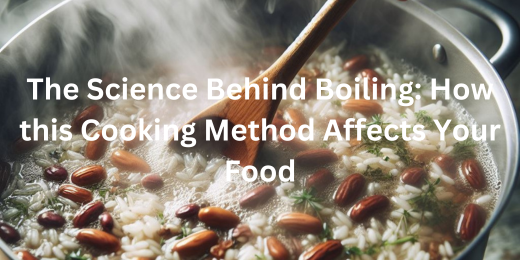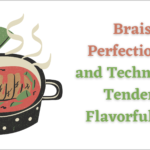Boiling point temperature
Boiling is a cooking method that involves heating liquids to their boiling point temperature, typically 100 degrees Celsius at sea level. It is a standard cooking method for various items such as pasta, veggies, and eggs. Comprehending how boiling affects food is critical because it can alter its taste, texture, and nutritional content.
The physical process of transforming water from a liquid to a gas is called boiling. When water hits its boiling point temperature, the molecules become more energetic and break away from their connections, forming steam. This procedure can impact food in various ways depending on the cooking technique.
It is crucial to understand the science behind boiling and how cooking techniques impact food to make informed decisions about how to cook different types of food. Understanding the consequences of boiling can help you make delicious and healthful meals for yourself and your loved ones, whether you are a professional chef or a home cook.
What happens when water boils?
The boiling point temperature is when a liquid turns into a gas, typically 100 degrees Celsius at sea level. However, the boiling point temperature fluctuates depending on the surrounding pressure. The boiling point temperature rises with increasing pressure.
When boiling is used as a cooking method, it has several effects on the food being cooked. Boiling vegetables, for example, might cause some of their nutrients to leak into the water, lowering their nutritional value. Boiling eggs for an extended period can result in an overdone, rubbery texture, whilst boiling meat can cause it to become tough.
The flavour effects of boiling vary depending on the cooking technique utilized. Simmering or slow-boiling, for example, can increase the flavour of soups and stews, but quick boiling can result in flavour loss. You are what you eat.
In summary, boiling water’s temperature and pressure can impact food in various ways. Understanding how different cooking techniques impact food when using boiling water can help create delicious and healthy meals.
Types of food that benefit from boiling
Boiling is a common cooking technique in which food is cooked in boiling water or another liquid. It is perfect for cooking many meals, such as potatoes, rice, pasta, eggs, and vegetables like broccoli and carrots. Boiling is a basic and straightforward process that requires little preparation time.
Boiling can also improve the taste and texture of some foods. Boiling vegetables, for example, keep their nutritional value and texture, whilst boiled meat becomes soft and moist. As vegetables are boiled, their natural flavours and nutrients are released into the water, making them a wonderful base for soups and stews. Boiling can also remove unpleasant odours and aromas from certain foods, such as bitter greens.
To achieve the best possible results, it is essential to understand how cooking techniques impact food. Boiling is a versatile way to cook that can improve the taste and texture of various foods. This makes it a great choice for busy cooks who want to make tasty, healthy meals quickly and easily.
Boiling vs other cooking methods
Vegetables, pasta, and seafood must be cooked with a moist heat source and are best cooked by boiling. This slow, gentle cooking method uses boiling water or liquid. Some foods, like meat, do not do well when boiled because they can get tough and dry. They might taste better if roasted, grilled, or sautéed instead.
The choice between boiling and other methods depends on the food and desired result. Boiling keeps the meat’s nutrients, while grilling gives it a smoky flavour and a crispy texture. Hence, understanding the boiling point temperature and cooking techniques’ impact on food is vital for achieving the best results in the kitchen.
Tips for boiling food
To boil food perfectly, it’s important to consider the boiling point temperature and cooking techniques’ impact. Water boils at sea level at 212°F (100°C), but some foods must be boiled at lower temperatures to prevent overcooking.
Covering the pot and stirring can change how long it takes to boil and how hot it gets. Altitude, the amount of food, and the material of the pot can also affect how fast something boils. Common mistakes to avoid are putting too much in the pot, adding salt too early, and not keeping track of the time. Follow these rules, and your food will always boil perfectly.
Conclusion
Boiling is a cooking technique that involves cooking food in boiling water. Understanding the boiling point temperature and cooking techniques’ impact is crucial for achieving the desired results. Boiling can make meat more tender, cook vegetables, and make pasta, but if you boil it too long, nutrients and taste can be lost.
Boiling is a simple way to make healthy and delicious food. Guidelines for boiling different kinds of food, avoiding common mistakes, and knowing what affects boiling times and temperatures can help you get perfect results. Every home cook needs to know how to boil as a cooking method.



